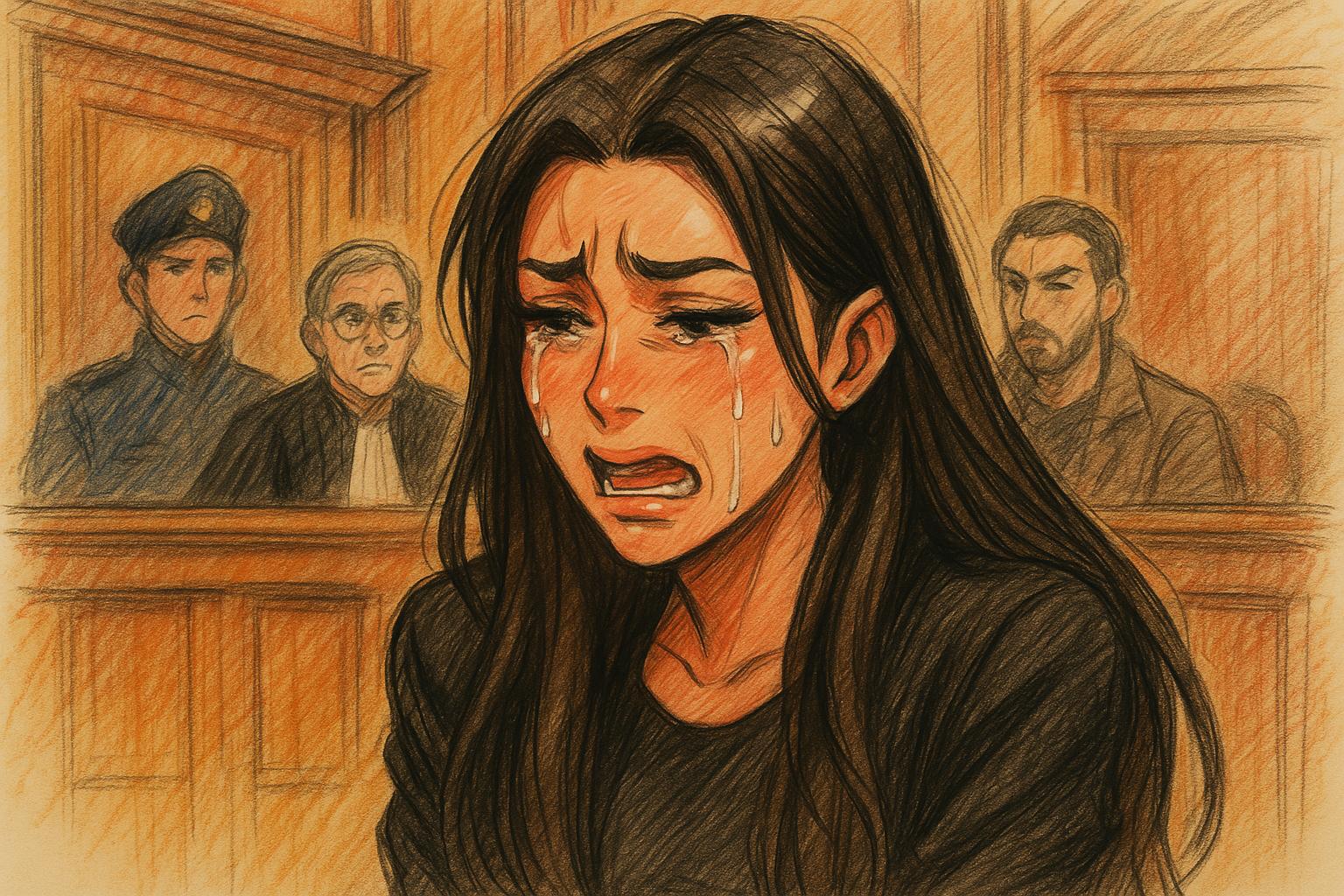The world of celebrity often thrives on glamour and perfection, yet courtroom sketches offer a stark contrast, revealing an all-too-human side to these figures. Recently, Kim Kardashian found herself at the centre of this phenomenon as she testified in a Paris court regarding the traumatic 2016 jewellery heist in which she was held at gunpoint and robbed of over $6 million worth of jewellery. In stark juxtaposition to her polished public image, the sketch of her during the proceedings rendered her with a pinched face, starkly emotional and far from her trademark flawless pout.
Kardashian's testimony details a terrifying scene where she was bound and threatened by masked intruders, who posed as police officers to gain access to her hotel room during Paris Fashion Week. As she recounted the horror of being dragged in handcuffs alongside a hotel concierge, she expressed a profound sense of fear for her life that night. This event not only marked a significant turning point in her life but also raised critical questions around celebrity security and the dangers posed by public visibility, particularly on social media. Indeed, many observers believe that Kardashian's high-profile lifestyle may have inadvertently facilitated the robbery, emphasising the precarious balance celebrities must maintain between public engagement and personal safety.
But Kardashian is not alone in suffering at the hands of courtroom sketch artists, whose artistic interpretations often defy their subjects' recognisable features. The Kardashian-Jenner clan, embroiled in various legal challenges, has faced their share of unflattering sketches. A notable incident occurred during a defamation case involving Blac Chyna, where Kylie Jenner was depicted with exaggerated bulging lips as she anxiously awaited a verdict. While the family emerged victorious in the trial, the sketches captured a particularly vulnerable moment for the make-up mogul, who saw her carefully curated image undone by an artist's hand.
Other celebrities, too, have experienced the indignity of courtroom portrayals that leave them looking unrecognisable. In a 2015 trial stemming from the 'Deflategate' scandal, NFL star Tom Brady was illustrated in a manner that bore little resemblance to his typically polished appearance, with a face described as melting and features distorted beyond recognition. Similarly, Taylor Swift’s court sketch from her 2017 counter-suit against a former DJ, which found in her favour regarding groping allegations, exhibited her in a rather unflattering manner, making her barely discernible from the iconic pop star image she maintains.
This phenomenon is not limited to the entertainment industry. The high-profile 'Wagatha Christie' trial between Rebekah Vardy and Coleen Rooney garnered significant media attention, with court sketches portraying Vardy as somewhat unflattering, an echo of the high stakes of their public feud. During the trial, Vardy, who faced a hefty legal bill, was sketched in an equally harsh light, indicating that even in the pursuit of justice, public figures often endure scrutiny that extends beyond the courtroom.
Such instances reveal a paradox: while celebrities inhabit a realm of luxury and admiration, they frequently confront the raw reality of human vulnerability, especially within the hallowed halls of justice. As courtroom artistry becomes a vehicle for narrative expression, it also serves as a poignant reminder that even the most polished of individuals can be rendered mere caricatures, stripped of their dignity in the eyes of the public.
Through these unflattering sketches, the glamorous façade of stardom is peeled away, exposing the nuanced complexities of celebrity life. The balance between maintaining public allure and the innate vulnerabilities that accompany such a profile remains a precarious one, emphasising the need for awareness and caution in both personal behaviour and public representation.
Reference Map
- Paragraph 1: [1], [2]
- Paragraph 2: [2], [4], [5], [7]
- Paragraph 3: [1]
- Paragraph 4: [1], [6]
- Paragraph 5: [4]
- Paragraph 6: [1]
- Paragraph 7: [1], [4]
Source: Noah Wire Services
